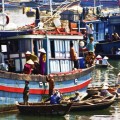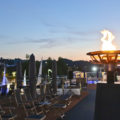
Fantastic temples – thousands of the most gorgeously ornate structures you’ll ever lay eyes on – dot the landscape in all directions.
Scanning the otherworldly valley of Burma’s ancient capital of Bagan, you can’t help but wonder whether with all the bricks they laid to build so many mystical shrines 1,000 years ago, they could have just combined their efforts and built a stairway to Heaven.
But of course, these wonderfully ornate monuments were built for wealthy Buddhist patrons who were more interested in making personal statements they hoped would ensure them a higher rung on the ladder of karma the next time around on Earth. So in the course of just a few centuries, this valley became studded with a heavenly array of more than 10,000 beautifully crafted pagodas and stupas.
Like so many building booms, it reached its peak just as a bubble was about to burst. The government moved out of town and in short order nature ended up taking over.
All but forgotten for centuries, Bagan is becoming a big tourist draw with the opening of tourism in Burma. We have only a day here on a cruise aboard Avalon Waterways’ Avalon Myanmar and I’m intent on making the most of it.
It’s all about impressions, so let’s not worry about a lot of description. Here are just a few of the fascinating images from a day in Bagan:
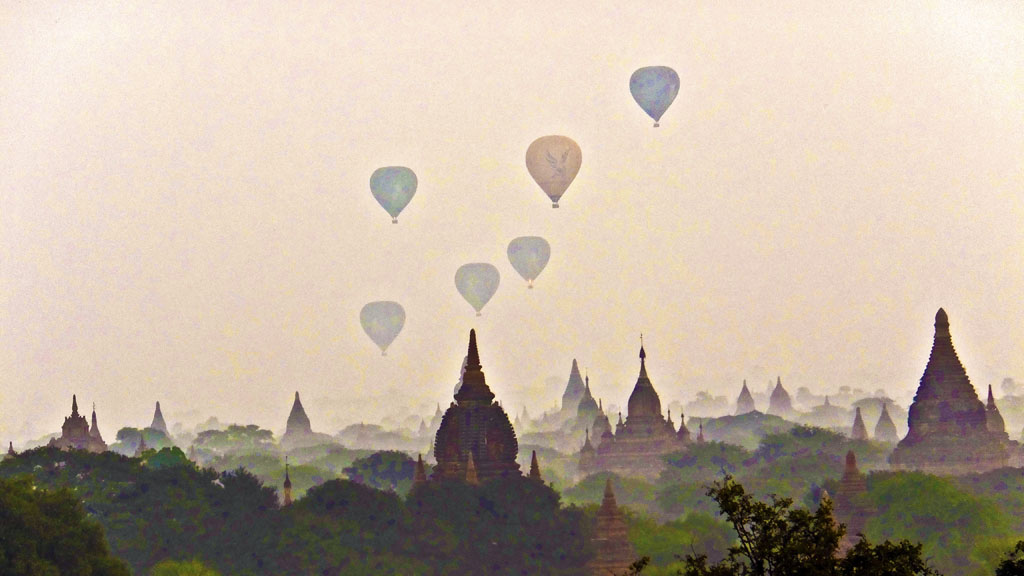
Sunrise Stair Climb
The morning arranged by Avalon starts before dawn with a bus ride to the Shwesandaw pagoda, whose steep sides and tall steps must have been designed for giant mountain goats. It’s a challenging climb in the dark, but as the sun brightens the horizon, it’s clear how remarkable this valley really is.
Graceful domes and towers jut skyward everywhere, many adorned with ornate carvings or dazzling gold leaf. Even though crowds have gathered on the balconies of the pagoda, there’s a hushed silence as sightseeing balloons rise from the morning mist and gently float over the brightening valley.
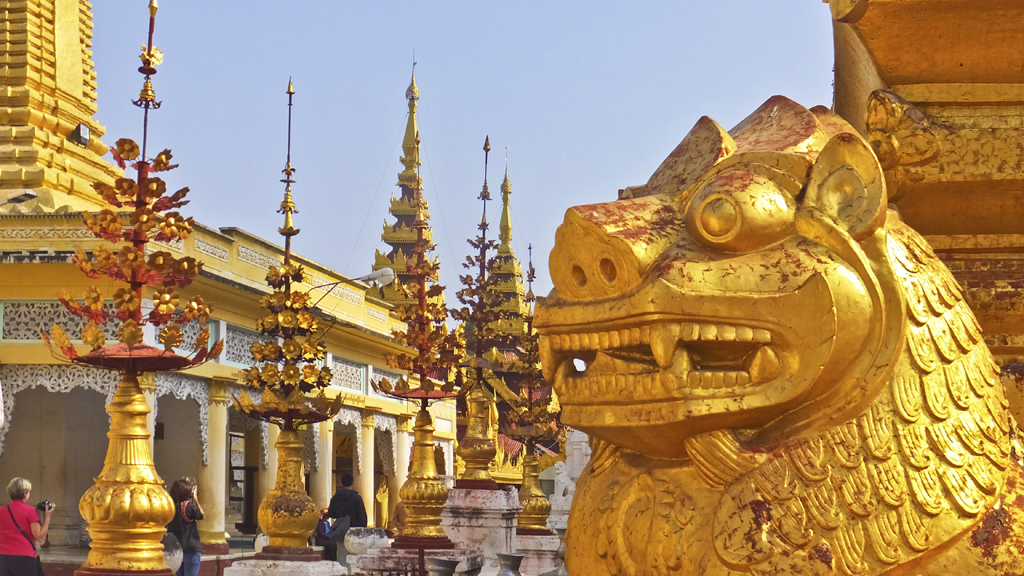
Gold Rush in New Bagan
Modern Bagan, outside the heritage archeological area, is alive with activity.
We’ve come here the opposite direction most cruises on the Irrawaddy River arrive in Bagan. Other ships sail between Yangon and Mandalay but we boarded at the northern reaches of the Irrawaddy and sailed south to Mandalay. After a week in the hinterlands where villages may have only a few hundred inhabitants, we suddenly feel like were back in a city. The shore’s lined with women doing their laundry in the murky water.
After breakfast on the ship, a morning tour takes us to the bustling market, whose narrow aisles are a kaleidoscope of colors, scents and strange sights. Even if you’re not in the market for the giant catfish or Churchill-sized hand-rolled cigars on sale in some stalls, there are shops piled high with brilliantly vivid fabrics and fascinating decorative masks and carvings .
Then, there’s a detour to a gold leaf factory that still depends on human power. Workers whack away all day with mighty sledge hammers to pound wafers of gold into sheets just a few atoms thick. These are cut into squares (priced at only about 50 cents) for devotees to stick on statues of the Buddha during their prayers.
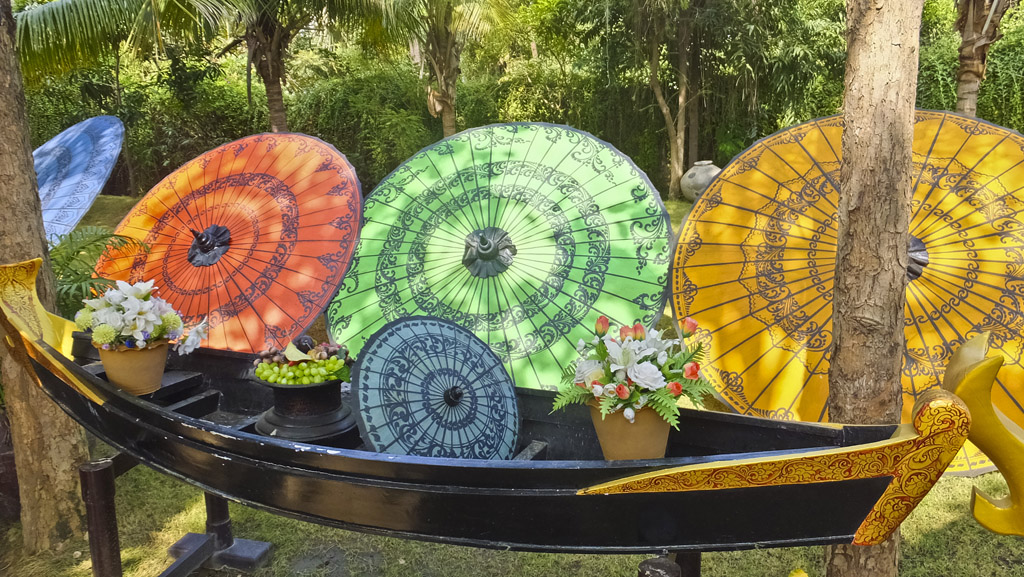
Hands-on Artisans
I thought the itinerary’s stop at a lacquer workshop would be one of those lame walks through a store full of overpriced trinkets, but this one is a fascinating look at traditional arts demonstrated by talented craftspeople.
Lacquerware decorated with gold leaf, gorgeous umbrellas and carvings, masks and puppets are all worth a serious look as souvenirs.
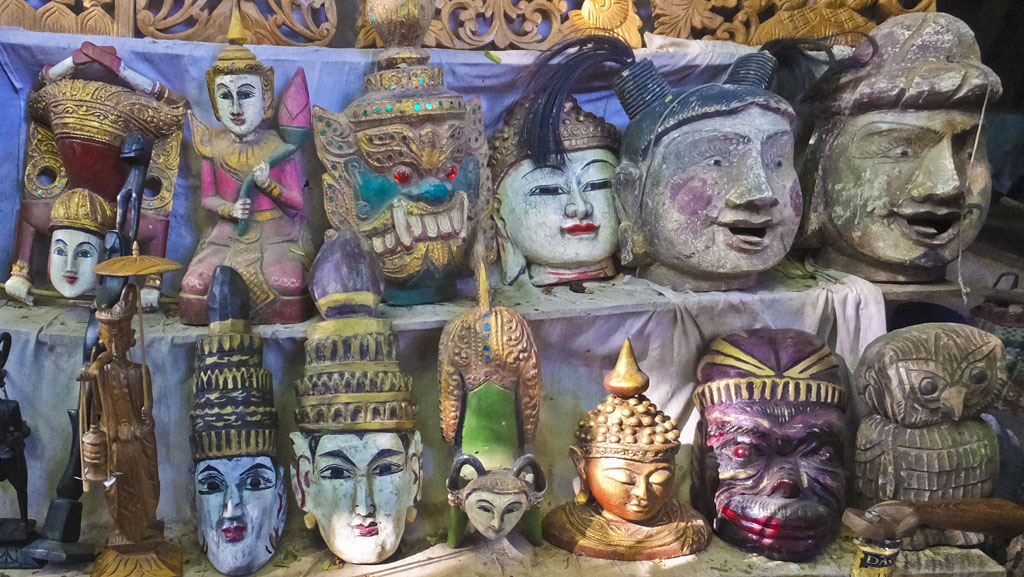
Don’t Be Stupa, Know Your Temples
Bagan has got – at last count – 3,220 monuments in various forms of repair from the more than 10,000 that were built here between 1044 and 1287. If there are interior rooms, the temple is called a pagoda and there are generally shrines and statues of the Buddha inside. If it’s a solid mound with no interior, it’s a stupa, and a burial monument for religious artifacts.
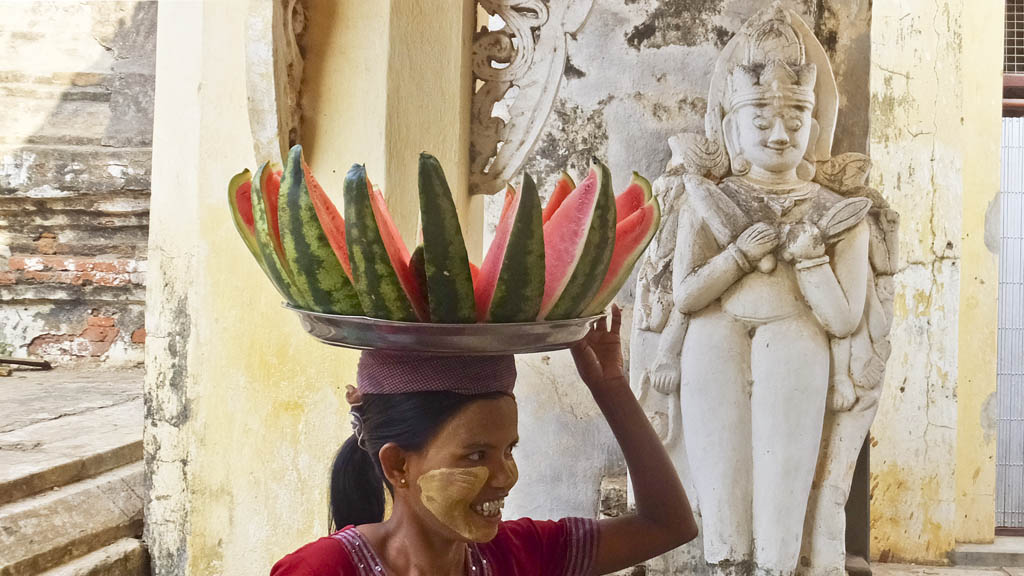
If You’re a Tuesday, You Must be….
The Burmese consider your birth day of the week so important that the first letter of their names often corresponds to the day of the week they were born.
Most large temples have separate shrines dedicated to each day of the week. It’s your call if the system rings true for you:
Saturday people are considered the strongest.
Sunday people are said to be the most diplomatic. (That happens to be my day and I hope I live up to the reputation).
Mondays are hot blooded lovers (but may have hot tempers as well).
Tuesdays are meticulous planners.
Wednesdays are listeners but have trouble making up their minds. (Maybe that’s the reason why there are often two shrines Wednesday, one for a.m. and one for p.m. birth people).
Thursday folks are flexible.
Friday people like to talk; (and they’re considered good mates for diplomatic Sunday people).
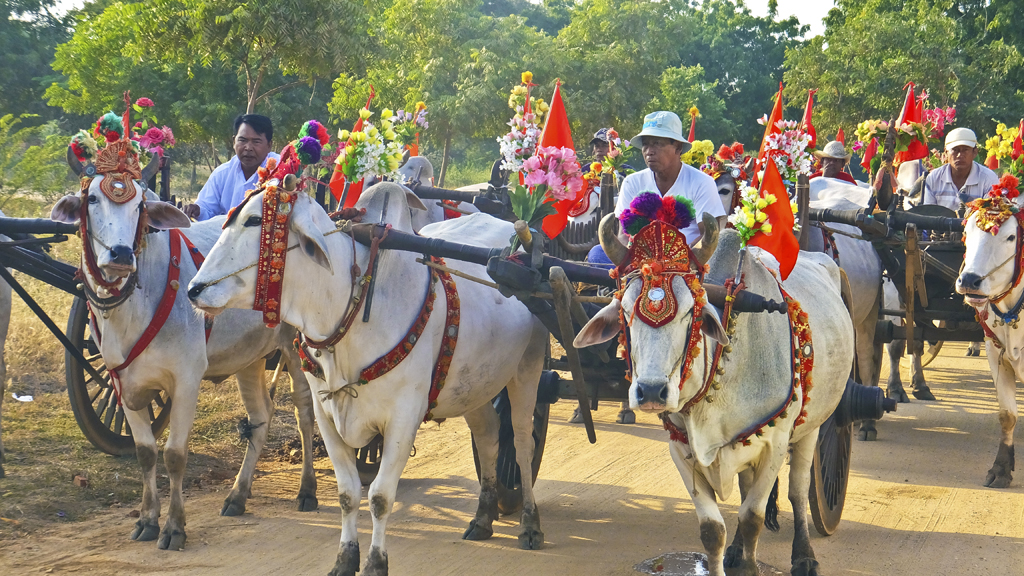
These Oxen Aren’t Stubborn
A unique experience arranged for passengers on Avalon Waterways is an afternoon ox-cart ride. It’s bouncy sitting in the back seat of the ornate and colorfully painted wooden carts with their huge wheels bumping along rough dirt roads, but there’s something otherworldly about the experience of the traditional ride over rutted trails that have been created by thousands of years of cart and foot traffic in the ancient valley.
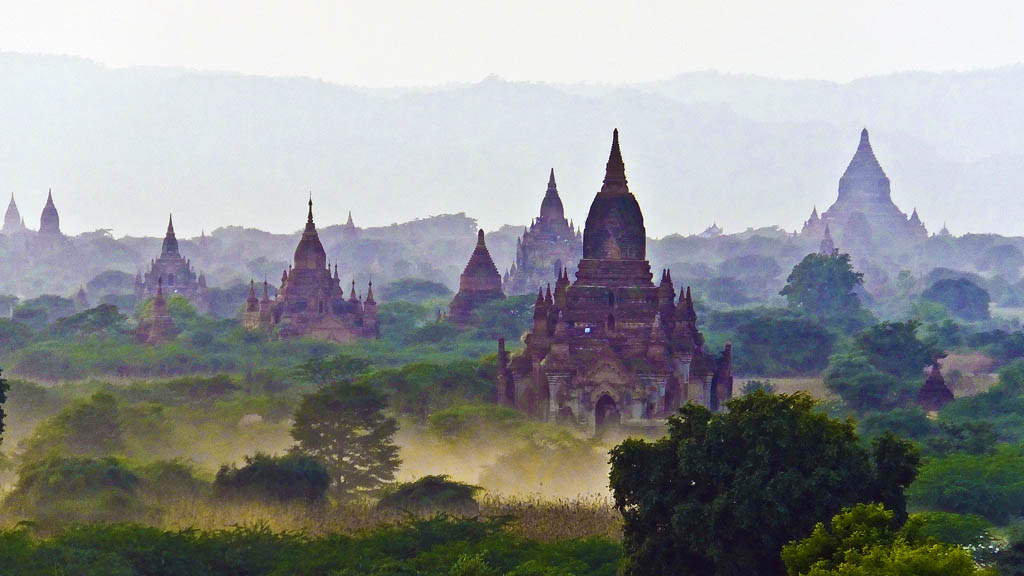
One Final Remarkable Vista
The ride ends at Dhammayangyi Temple, the most massive structure in Bagan and a mecca for visitors who want to view the sunset.
It’s got a bizarre story attached. It was built in the 1160s by King Narathu, who got the top job by murdering the king, his father. The remarkable building built by stacking up bricks with no mortar between them, was supposedly to make amends for the crime but it’s said he also had masons executed if even a needle could be pushed between the bricks they laid.
The temple was never finished because–not surprisingly–he was assassinated before the job was completed. Still his legacy was built so well it’s stood without a crack for over 800 years.
Wouldn’t it be interesting if they really had tried to build that stairway to Heaven?

